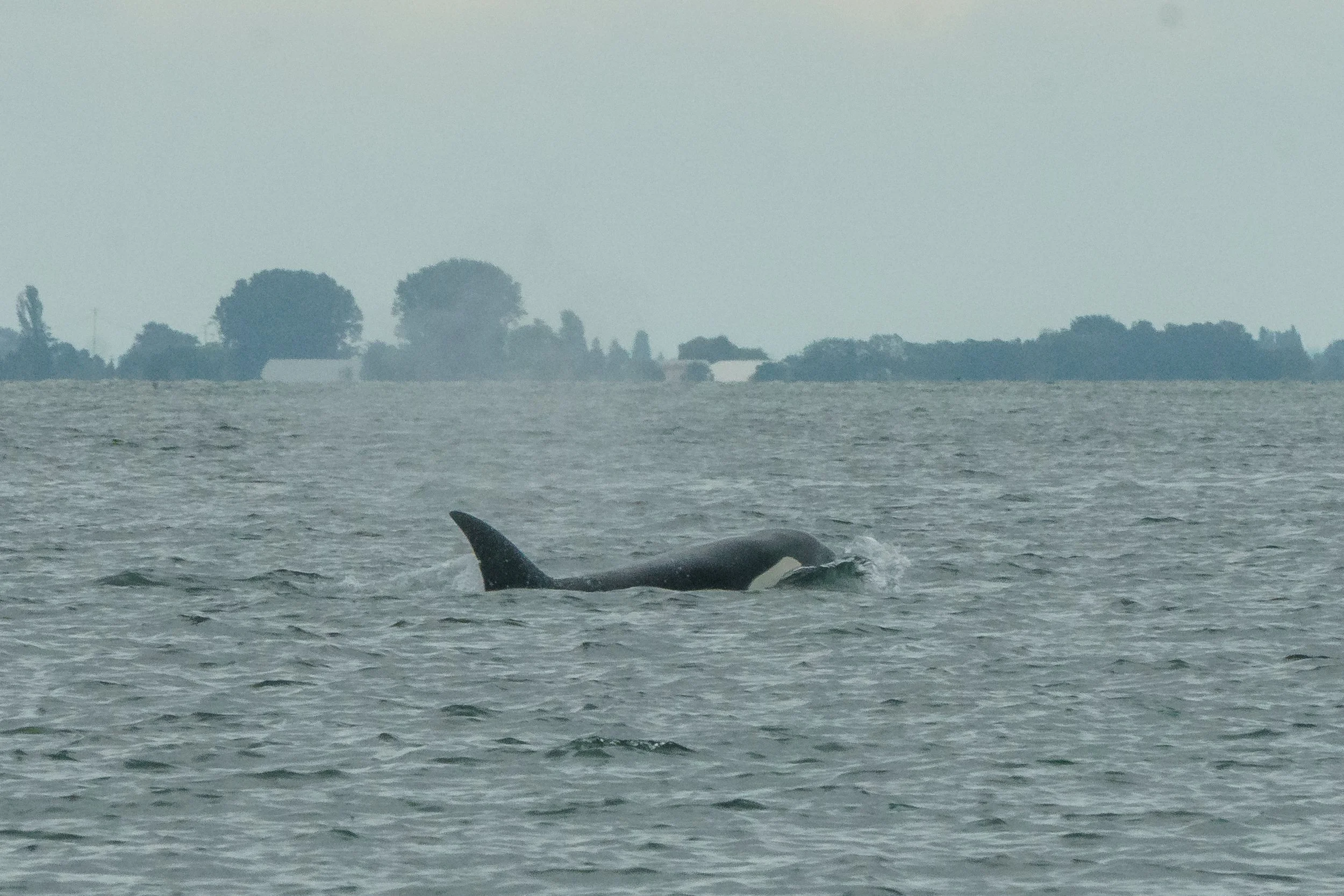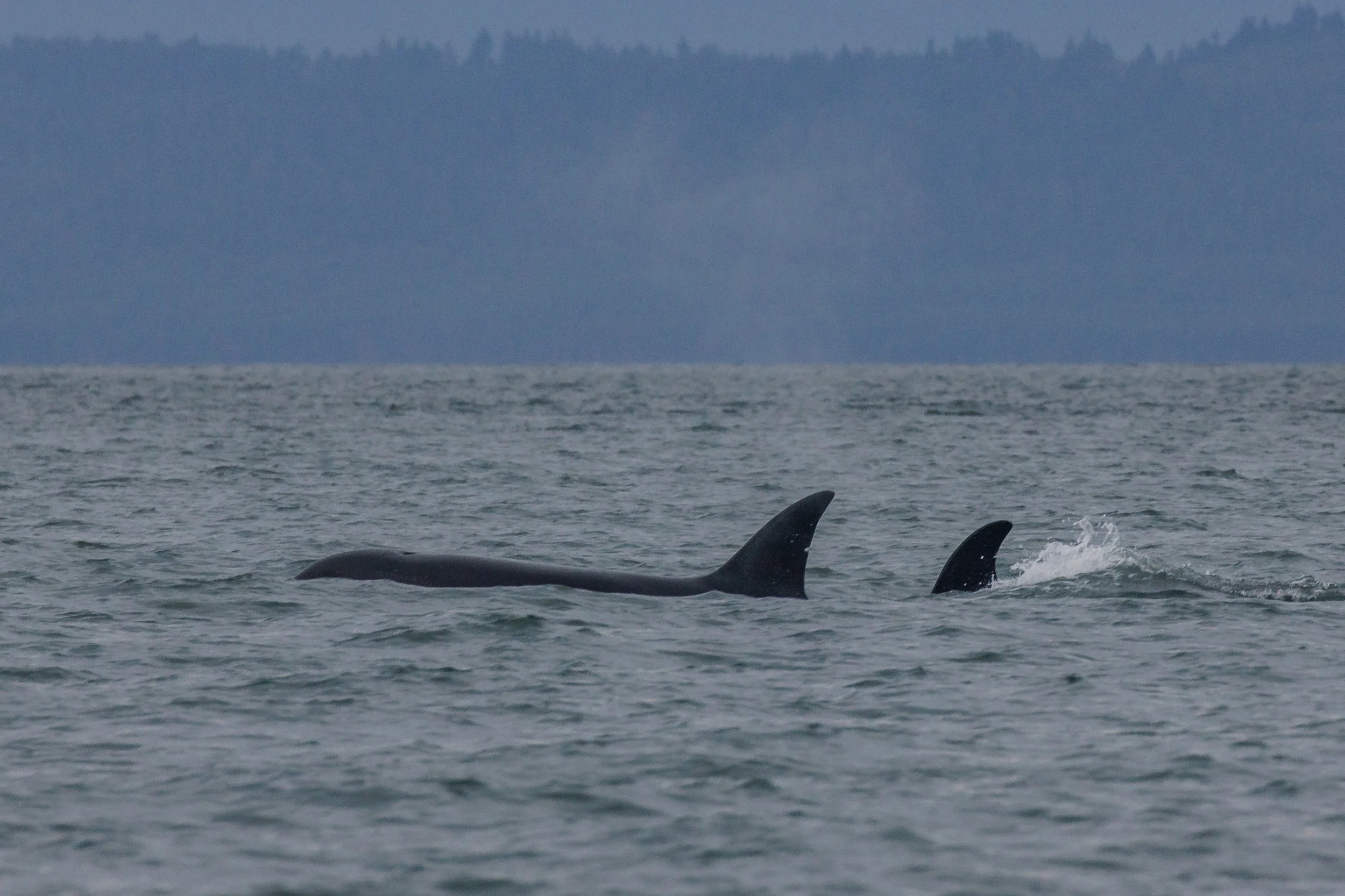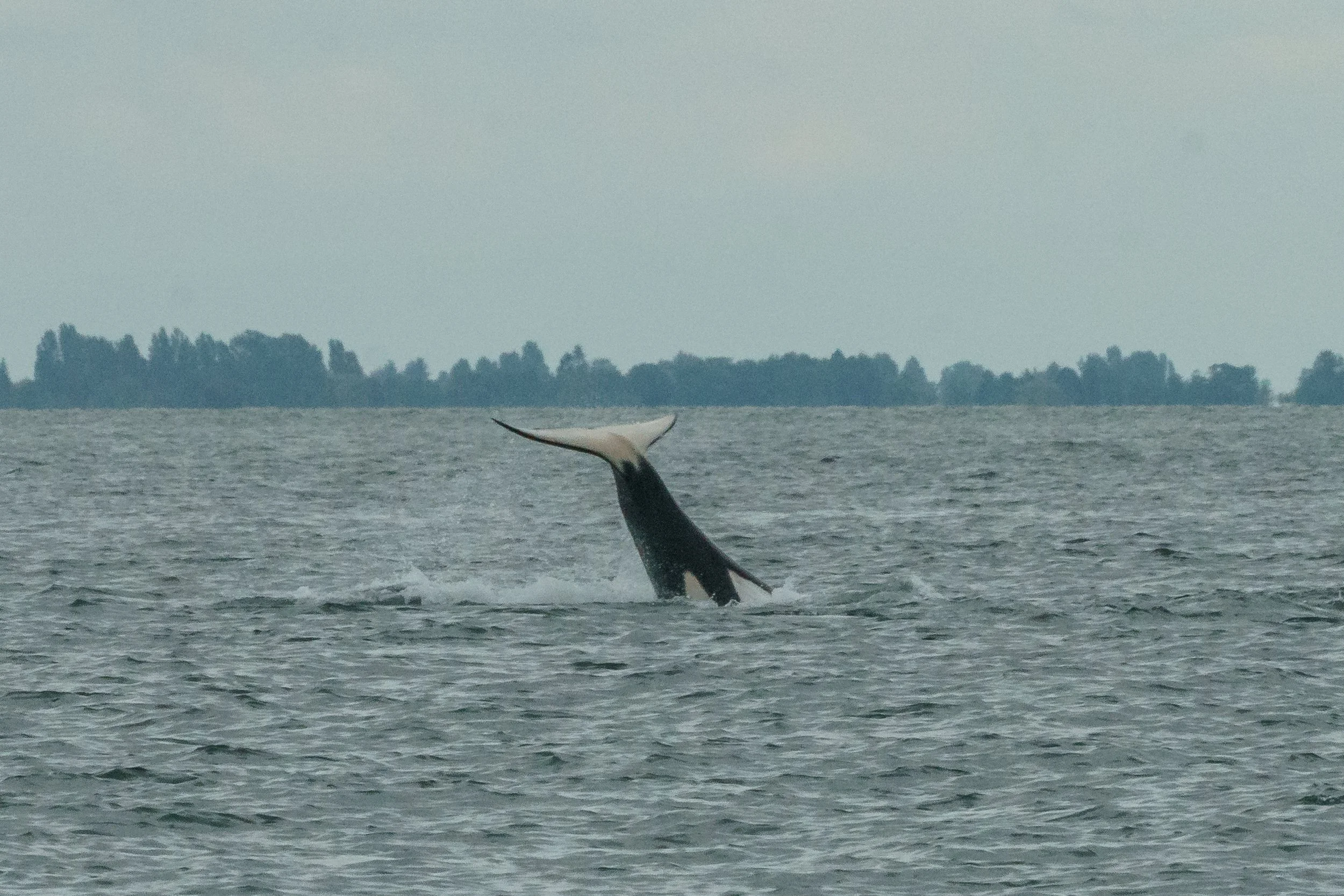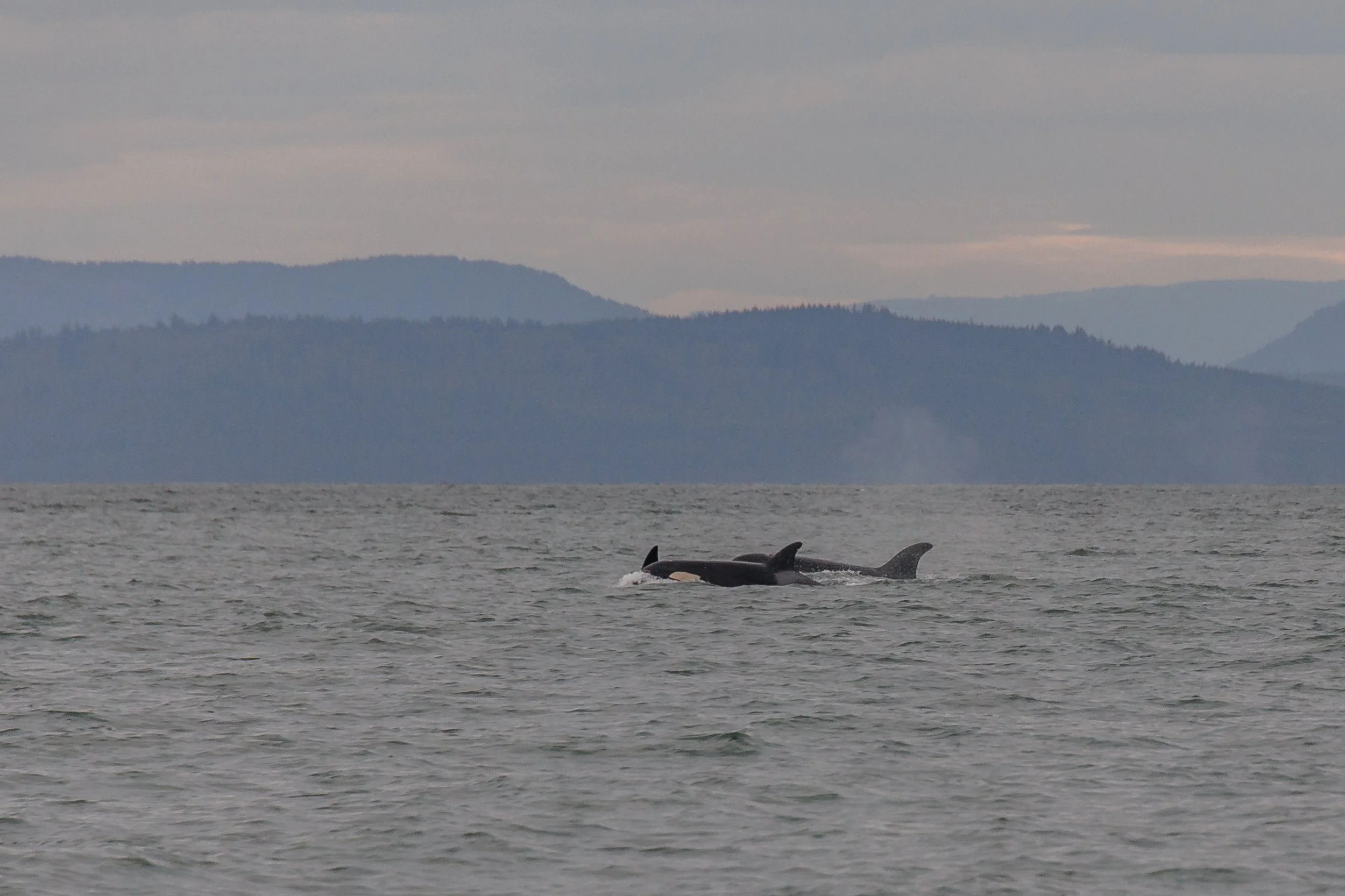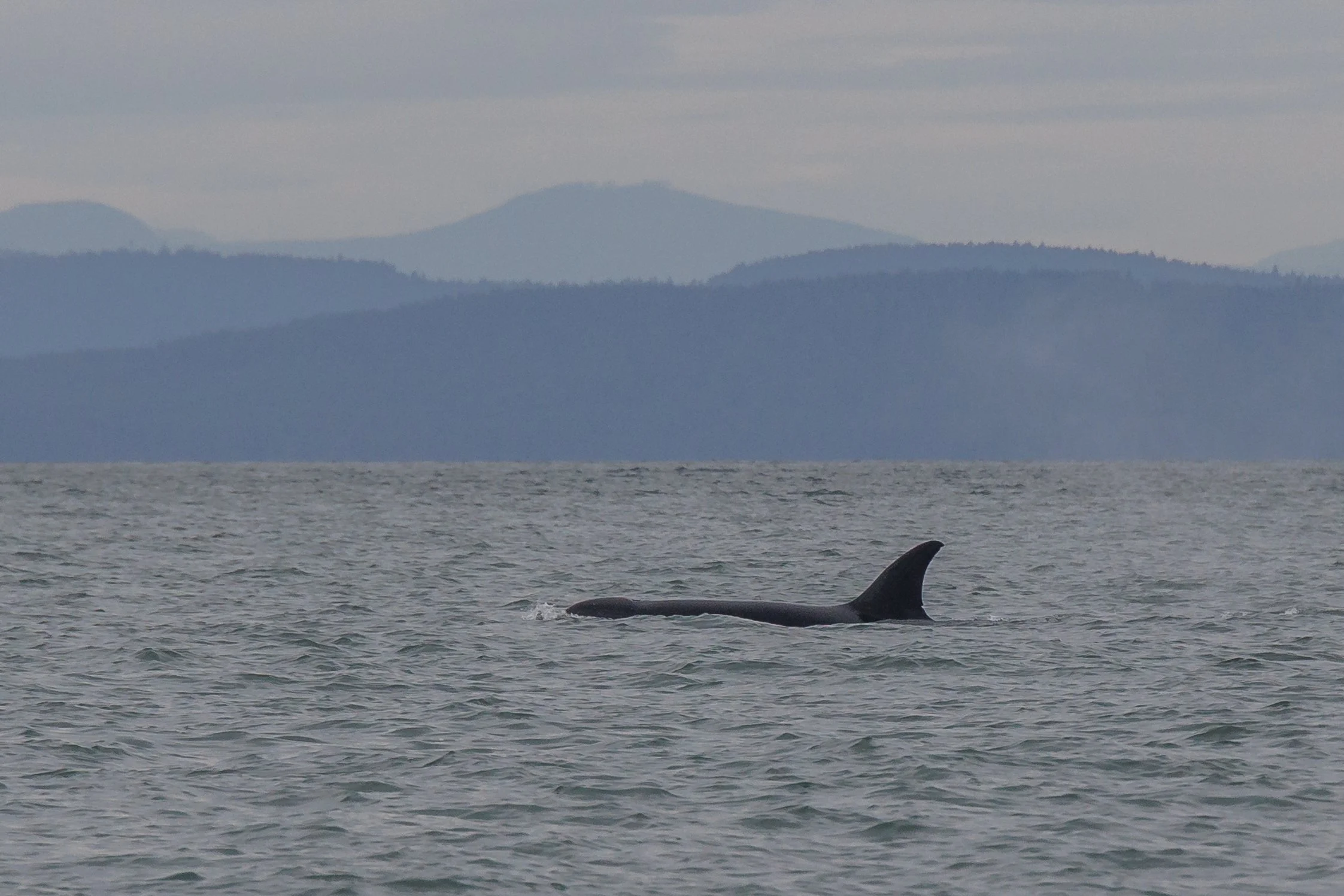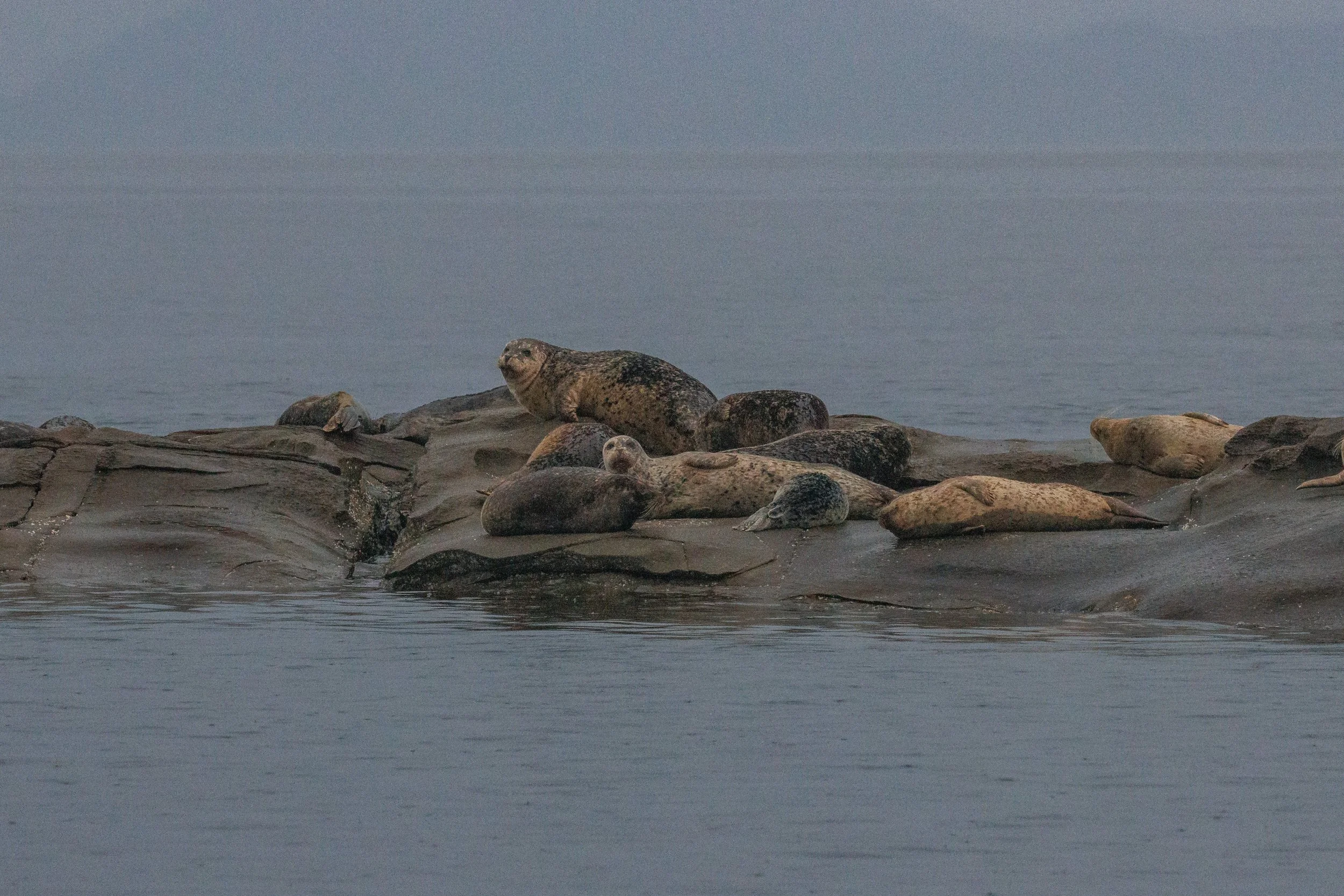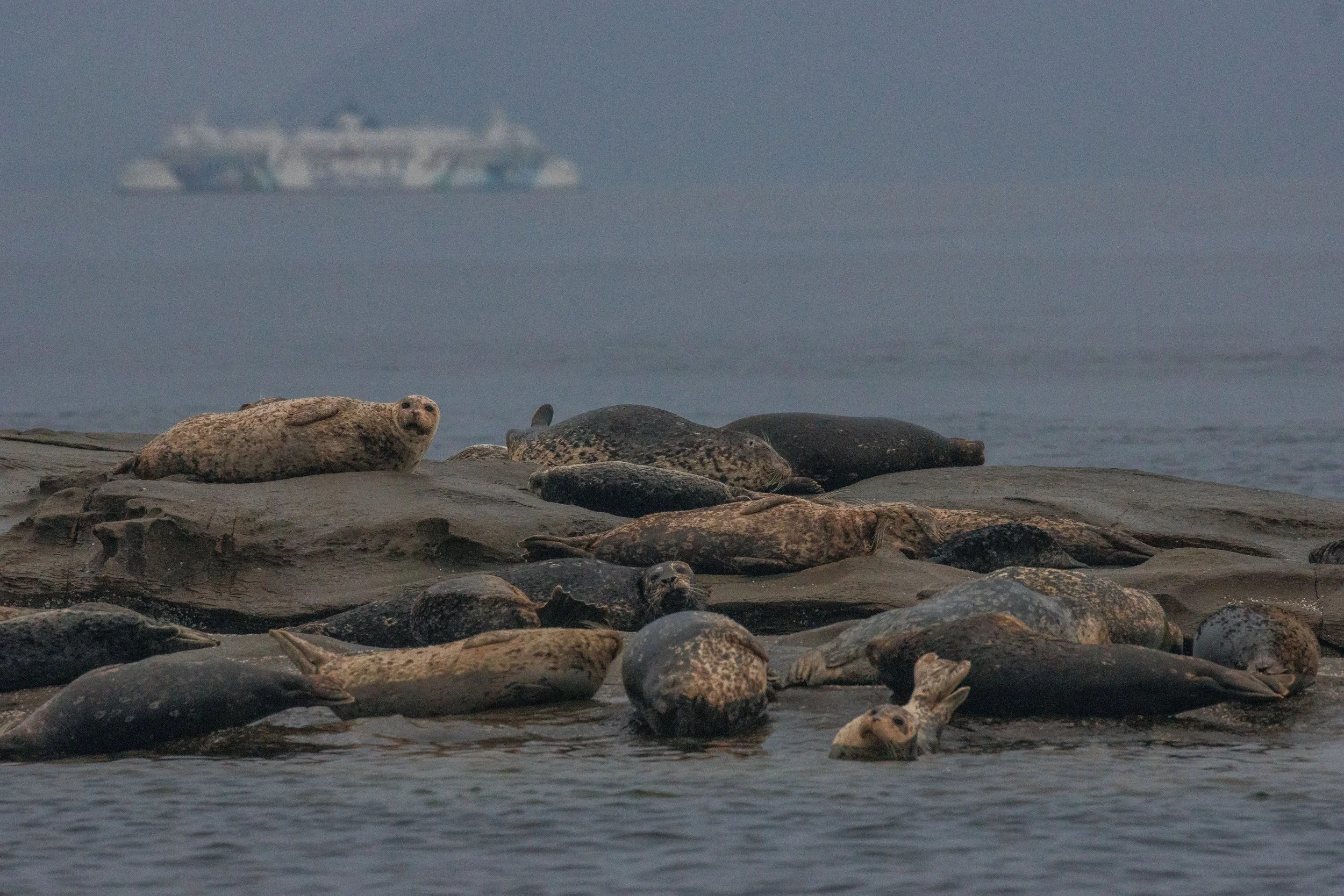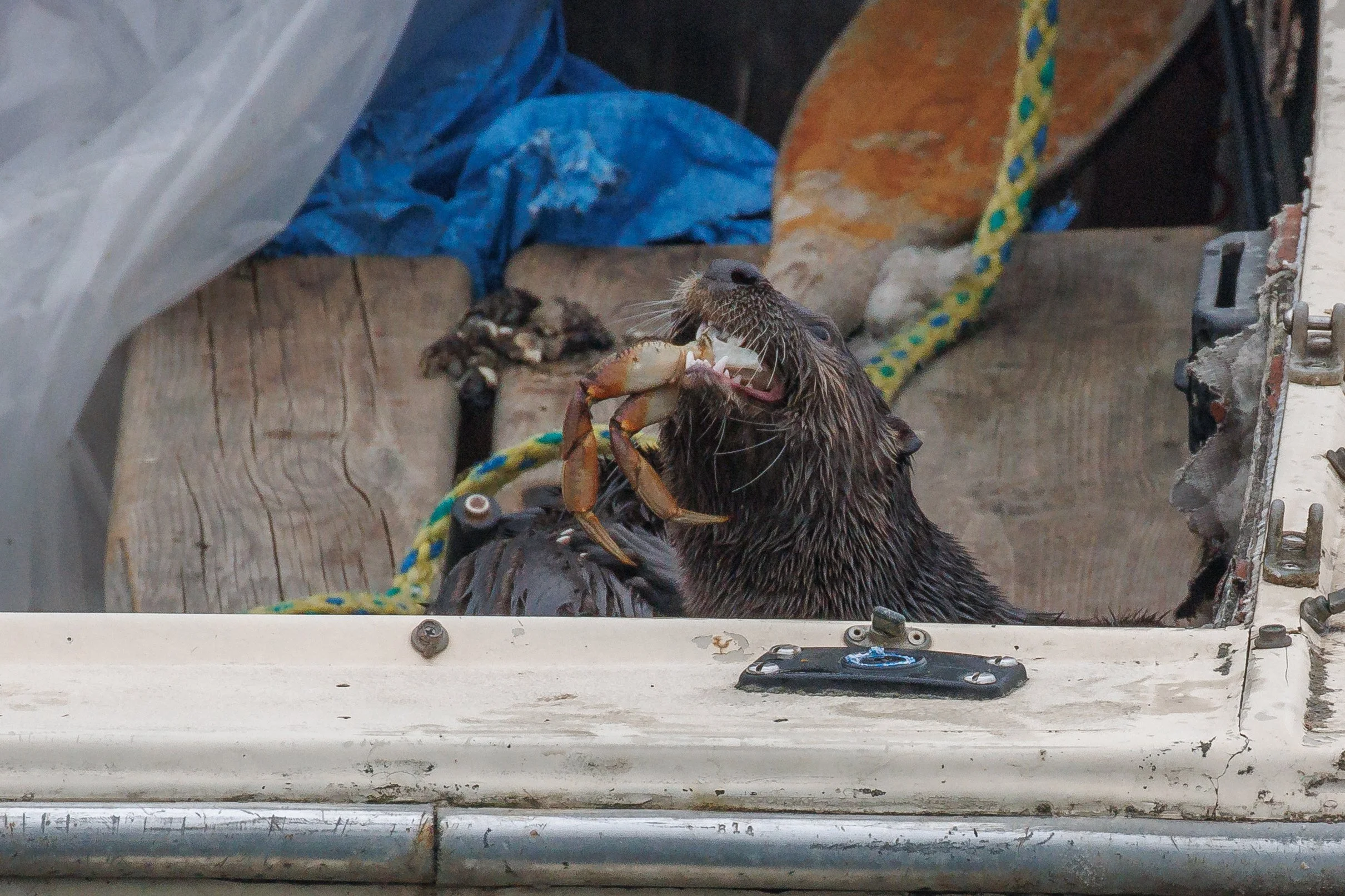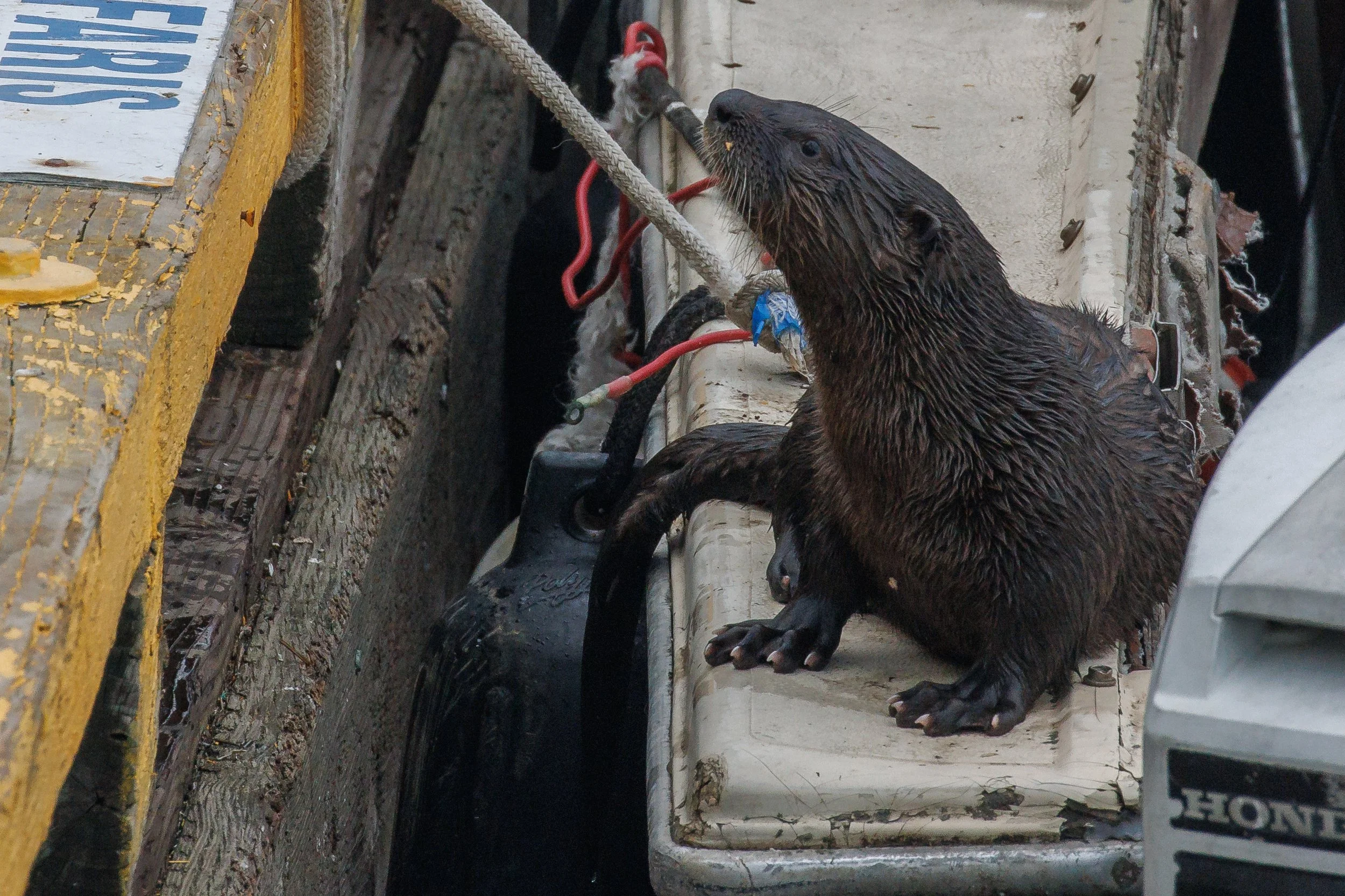August 8, 2023, 3:30 PM - T036s and Indy plus Windy
A Double-species afternoon! Orcas spotted during this afternoon’s included:
T036 Flapjack (≤1970)
T036B Tattertip (1998)
T036B1 Bhotia (2009)
T036B2 Greenfelder (2013)
T036B3 Chip (2018)
T065A5 Indy (2014)
The T036s are a pod that is relatively easy for our Naturalists to ID, as T036B Tattertip has a very distinct notch out of the top of their dorsal fin. Most scars and notches on orcas are from sea lions, entanglement or rough behaviour from other orcas. Orcas are very playful animals, hunting, mating and socializing with different family pods quite often. Today the T036s were joined by T065A5 Indy, our resident drifter, who has been travelling by himself or with numerous other family groups for about 2 years now. Indy is a very good example of how playful orcas can be. On multiple occasions this summer season, we have come across him by himself playing with crab traps. All of a sudden we’ll see the float on a crab trap disappear, being tugged underwater by Indy who is clearly enjoying himself a lot.
Transient orcas feed on small marine mammals. Research has suggested that harbour seals are the most commonly eaten marine mammal in their diet. Also commonly fed on by transient orcas are harbour porpoises and sea lions. Larger sea lions are generally avoided being hunted as they are physically large and have large teeth, so they put up a greater fight than harbour seals and harbour porpoises.
Each orca in a family pod needs to eat about 300 lbs of food every day. An adult harbour seal weighs 285 lbs. With how many orcas were present in today’s group, they would need to eat at least 8 harbour seals every day to stay well-fed. Orcas have teeth made for tearing, not chewing. Once immobilized, orcas will tear apart their food and share it with their family, each swallowing a piece of the meal whole.
We were also lucky enough to see a humpback whale on our tour today. Spotted today was a whale we’ve seen consistently for the past four years. Our humpback whale was:
Windy has consistently been a tough whale to ID for us because of his dislike of showing his tail all the time. Lucky for us, we’ve come to remember what his dorsal fin looks like and if he’s not fluking we’ll be able to ID him using just his dorsal fin. Windy is at least 12 years old and spends his winters breeding in Hawaii. Humpback whales migrate to and from their breeding and feeding grounds. Here in the Salish Sea, humpbacks are feeding on about 3000 lbs of fish, krill and plankton every day. Humpbacks need to eat so much because they need to fuel up for the winter breeding season. In Hawaii, there is little to no food for Windy to eat so he eats as much as he can before he returns to Hawaii in the winter.
Photos during this tour were taken by Marine Naturalists Des Poier, Val Watson, and Ella Hillbrecht.
T036B3 Chip surfacing and showing off his eye patch. Photo by Ella Hillbrecht.
T036B1 Bhotia surfacing in the waves. Photo by Val Watson.
T036B1 Bhotia surfacing in front on T065A5 Indy. Photo by Ella Hillbrecht.
Bhotia and Indy. Photo by Val Watson.
T036B1 Bhotia travelling with T065A5 Indy. Photo by Val Watson.
T036B1 Bhotia surfacing with Galiano Island in the background. Photo by Des Poier.
Someone has their tail in the air! Photo by Val Watson.
T036 Flapjack followed by T036B3 Chip, and T065A5 Indy. Photo by Des Poier.
T036B Tattertip. Photo by Des Poier.
Windy going for a dive. Photo by Ella Hillbrecht.
Windy lifting his tail to dive. Photo by Val Watson.
The underside of Windy’s fluke. Photo by Val Watson.
Harbour Seals hauled out near stinky rock. Photo by Ella Hillbrecht.
Harbour Seals. Photo by Ella Hillbrecht.
Harbour Seals looking back at us on the boat. Photo by Ella Hillbrecht.
BABY OTTERS!! So cute. Photo by Cheyenne Brewster.
We can’t get over how cute they are! Photo by Cheyenne Brewster.
The young otter playing on the boat. Cheyenne Brewster.
While chomping on the crab they’ve got their paw on their sibling. Photo by Cheyenne Brewster.
The baby chomping on crab legs they found. Photo by Cheyenne Brewster.
Another look at the young otter. Photo by Cheyenne Brewster.


